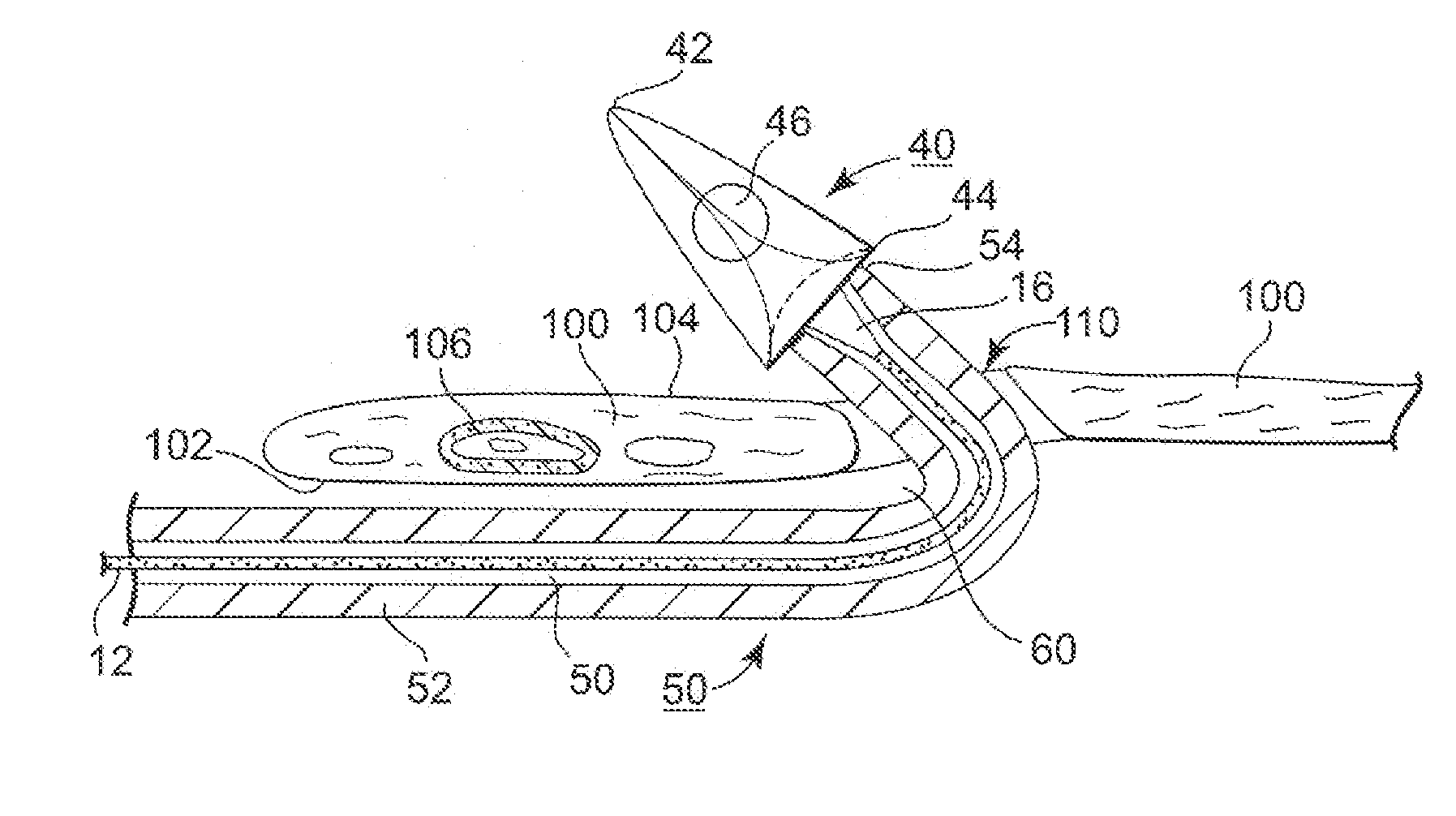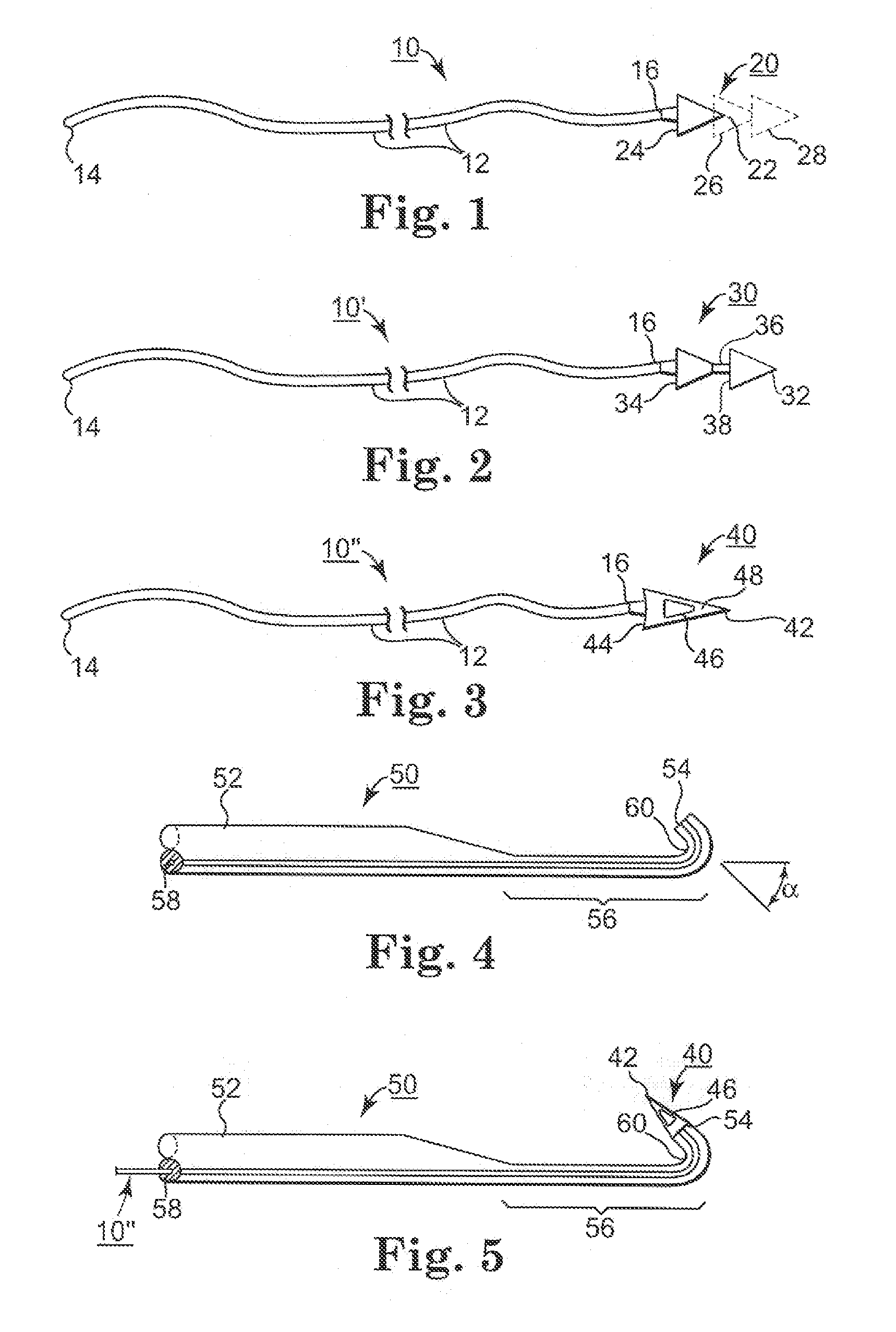Minimally Invasive Methods and Apparatus for Accessing and Ligating Uterine Arteries with Sutures
a uterine artery and minimally invasive technology, applied in the field of minimally invasive methods and apparatus for accessing and ligating uterine arteries with sutures, can solve the problems of fibroid shrinkage and cessation or diminution of clinical symptoms, excessive blood loss, and prolonged convalescence,
- Summary
- Abstract
- Description
- Claims
- Application Information
AI Technical Summary
Benefits of technology
Problems solved by technology
Method used
Image
Examples
Embodiment Construction
[0049] In the following detailed description, references are made to illustrative embodiments of methods and apparatus for carrying out the invention. It is understood that other embodiments can be utilized without departing from the scope of the invention. The surgical procedures, tools and kits of the present invention are not necessarily limited to but are particularly suited to effect uterine artery ligation in a minimally invasive manner to treat uterine fibroids or other conditions of the uterus. Thus, preferred methods and apparatus are described for controlling uterine arterial blood flow by diminishing or blocking arterial blood flow to the uterus to treat diseases and disorders, e.g., uterine fibroids and uterine bleeding.
[0050] The methods of the preferred embodiments of the present invention involve making incisions through the fornix to access the uterine arteries and cardinal ligaments. One suitable approach to accessing the right and left uterosacral and cardinal lig...
PUM
 Login to View More
Login to View More Abstract
Description
Claims
Application Information
 Login to View More
Login to View More - R&D
- Intellectual Property
- Life Sciences
- Materials
- Tech Scout
- Unparalleled Data Quality
- Higher Quality Content
- 60% Fewer Hallucinations
Browse by: Latest US Patents, China's latest patents, Technical Efficacy Thesaurus, Application Domain, Technology Topic, Popular Technical Reports.
© 2025 PatSnap. All rights reserved.Legal|Privacy policy|Modern Slavery Act Transparency Statement|Sitemap|About US| Contact US: help@patsnap.com



